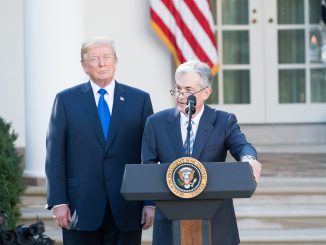Reporter Mark Whitehouse, via the Wall Street Journal, has a piece on a negative side effect of the Federal Reserve’s zero interest rate policy:
Mr. Yeager is among the legion of retirees who find themselves on the wrong end of the Federal Reserve’s epic attempt to rescue the economy with cheap money.
A long spell of low interest rates has created a windfall worth billions to banks, mortgage borrowers and others it was designed to benefit. But for many people who were counting on their nest eggs, those same low rates can spell trouble.
I was a bit surprised that Whitehouse did not compare the current situation with that of Japan, where the elderly have long suffered from the impact of ultra low interest rates. Perhaps that part was left in on the editing room floor.
As with many polices, there are winners and losers, and the losers now are with those dependent on the once steady returns from ultra-safe assets. Dallas Fed President Richard Fisher:
“Americans who have done everything right, have worked hard, saved their money and stayed out of debt are the ones being punished by low interest rates,” says Richard Fisher, president of the Federal Reserve Bank of Dallas and a voting member of the Fed’s policy-making open market committee. “That state of affairs is not sustainable for a long period of time.”
Fisher obviously doesn’t realize that Japan has already proved that it is indeed sustainable for a long period of time.
At one point, I might have shared this concern, thinking that the Fed was recklessly snuffing out yield along the yield curve regardless of the damaged it caused to older savers. But there is problem with this analysis – the Fed’s policies are following the economy, not leading it. If economic activity was stronger, yields on safe assets would be rising, forcing the Fed to follow suit on the short end of the curve. We are stuck with the opposite. Despite all the warnings of the bond vigilantes, yields stubbornly remain low, as one would expect if the US economy was mired at or near a liquidity trap. As a consequence, those most dependent on safe assets suffer.
I think Fisher thinks he can help savers by lifting short-term rates. I suspect that is temporary help at best – it would undermine the recovery and force the Fed right back to a zero-rate stance. Instead, we need to lift the economy far from the liquidity trap, which would entail more fiscal and monetary stimulus. Now that the economy is on upswing, give it a final boost to reestablish past trends. Alas, we are likely to get neither. Fiscal policy is poised to be at least mildly contractionary, and the Fed will bring assets purchases to a halt within a few months – with a nontrivial contingent of policymakers eager to actually repeat the mistakes of 1937 and tighten soon.
Finally, if believe the Fed’s policy is creating an adversely affected group even as others are helped (the financial services sector), you could remedy the negative impact with transfer payments. Especially with such an easily identifiable group – just boost social security payments (funded perhaps by a financial services tax). Try selling that one in a Congress bent on fiscal discipline.
- Bulenox: Get 45% to 91% OFF ... Use Discount Code: UNO
- Risk Our Money Not Yours | Get 50% to 90% OFF ... Use Discount Code: MMBVBKSM
Disclaimer: This page contains affiliate links. If you choose to make a purchase after clicking a link, we may receive a commission at no additional cost to you. Thank you for your support!





Leave a Reply